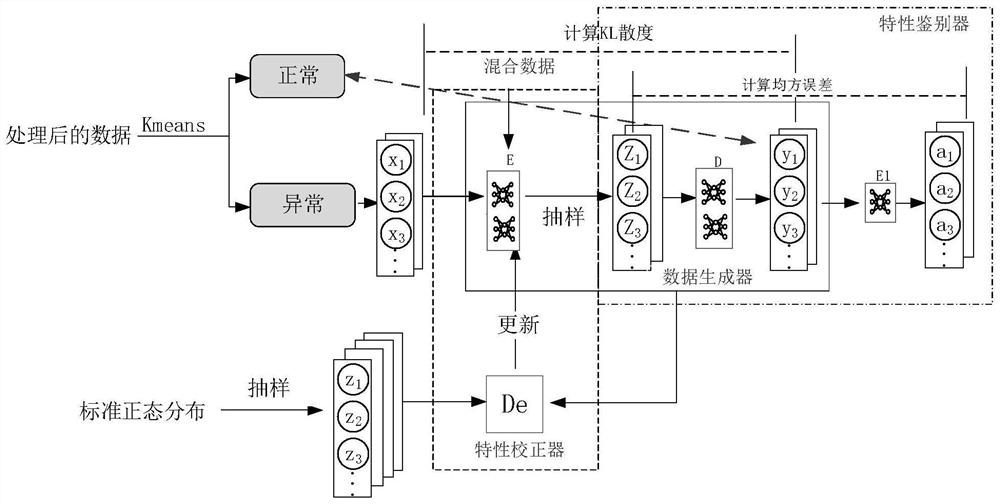Distributed Internet of Things equipment anomaly detection method
An IoT device and anomaly detection technology, applied in the IoT field, can solve problems such as the inability to assess the impact of abnormal data on model training, the inability to meet model differentiation, and the complexity of network anomaly detection, so as to improve generalization capabilities and reduce Communication time and energy consumption, the effect of highlighting anomalies
- Summary
- Abstract
- Description
- Claims
- Application Information
AI Technical Summary
Problems solved by technology
Method used
Image
Examples
Embodiment 1
[0055] In this embodiment, data enhancement is performed on abnormal data first, positive and negative sample data are balanced, and then abnormality detection is performed.
[0056] Among them, the data is preprocessed, and its flow chart is as follows figure 1 Shown:
[0057] This embodiment adopts the anti-double coding network. The overall structure of the model includes three functions, namely data generation, feature correction and abnormal feature discrimination. The overall network structure diagram is as follows figure 2 shown.
[0058] Next, we will introduce them one by one:
[0059] 1) Data generation:
[0060] In order to solve the problem of the singleness of samples produced by the traditional autoencoder, the present invention improves the encoder of the traditional autoencoder network. The encoder is composed of two functional networks, which actively learn the latent features of the data respectively. By sampling to generate latent features, sampling noi...
PUM
 Login to View More
Login to View More Abstract
Description
Claims
Application Information
 Login to View More
Login to View More - R&D
- Intellectual Property
- Life Sciences
- Materials
- Tech Scout
- Unparalleled Data Quality
- Higher Quality Content
- 60% Fewer Hallucinations
Browse by: Latest US Patents, China's latest patents, Technical Efficacy Thesaurus, Application Domain, Technology Topic, Popular Technical Reports.
© 2025 PatSnap. All rights reserved.Legal|Privacy policy|Modern Slavery Act Transparency Statement|Sitemap|About US| Contact US: help@patsnap.com



